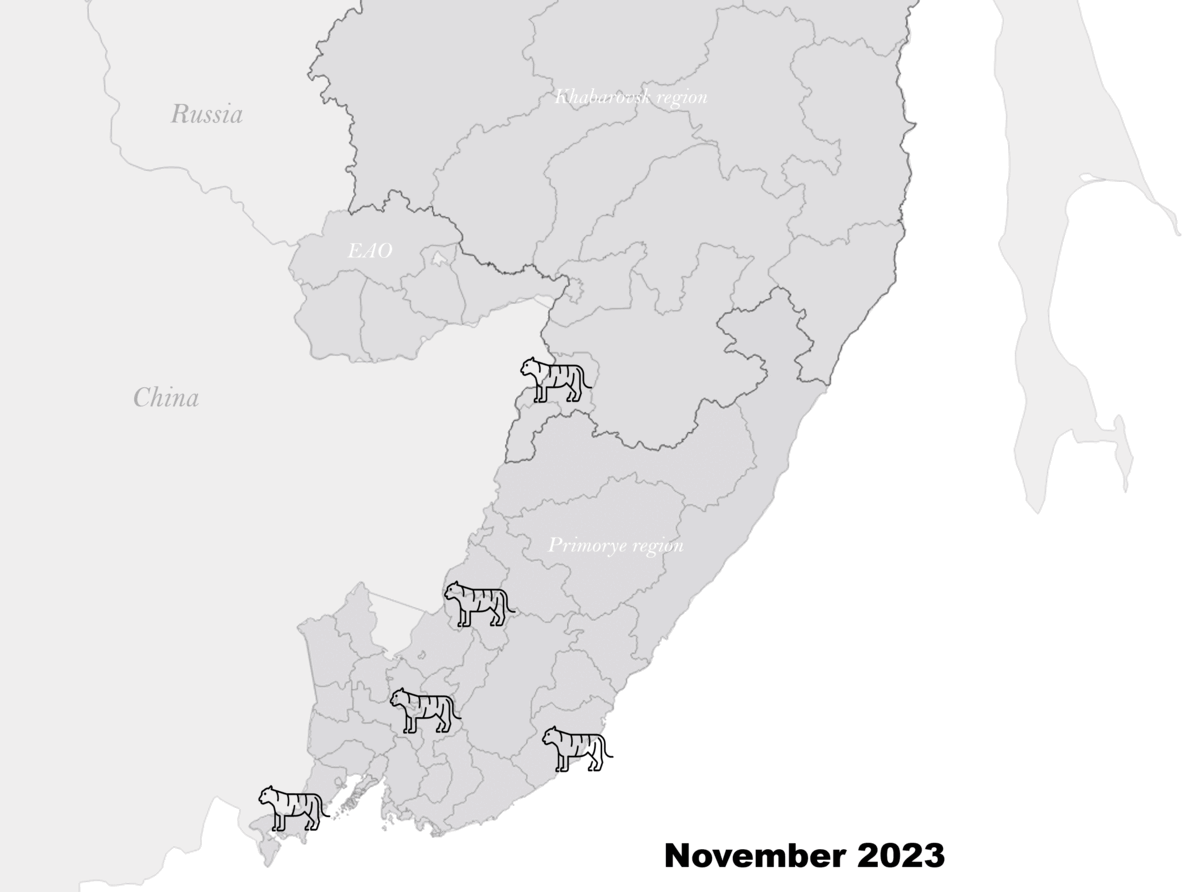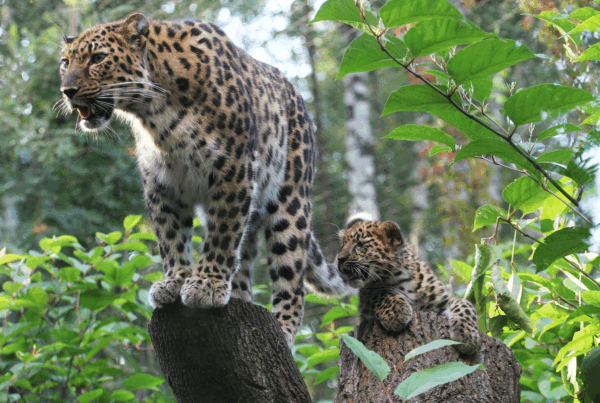- Amur tigers gain attention and concern as their frequent appearances in social media highlight conservation success.
- Despite admiration for these majestic creatures, increased encounters result in conflicts, impacting both tiger habitats and human safety.
- Rising incidents of tiger conflicts with pets and livestock, exacerbated by declining prey populations and habitat disturbance from logging, demand urgent conservation actions for long-term sustainability.
“Oh kitty! You are so pretty!” These words accompany most of the videos fortunate travelers send to public news channels to share the excitement of sighting Amur tigers. While only a few years ago it took tremendous luck to spot a tiger and film the meeting, nowadays curious wild cats pose for cameras with stunning regularity applauding successful conservation efforts.
Amur tigers – A viral sensation
In 2023 alone, Amur tigers became heroes of shared phone video footage at least 30 times and popped up over a hundred times in Primorye and Khabarovsky region’s social news channels. Most of the recorded sightings occur along the road where drivers, acknowledging the danger through precautionary closed windows, couldn’t refrain from complimenting the grace and beauty of big cats. In one of the recent videos widely shared through social media, a woman barely could hold her breath commenting on two Amur tigers she met along the road in the Shkotovsky district, saying in the end that she got “the most spectacular video today”. In another recording from the same district man said “Here we came for fishing…” with a mixture of surprise and confusion while filming a curious tiger family coming out to a forest road to greet visitors. While being seen across the whole living range, the southern parts of Primorye – the areas with a high human population and dense road network, – are the major source of tiger footage. Terneysky district is another ‘hot tiger spot’ in the region where young tigress Severina with her cubs from Sikhote-Alin Biosphere Reserve regularly became an object of admiration for locals and visitors.
People in public channels note that tigers are becoming less afraid of cars and people, and more curious and confident – oftentimes they don’t leave right away but check out cars from a safe distance until they feel disturbed. For example, a tiger from Fokino became an object of filming by many people in winter 2022 by peacefully lying down on the side of a major highway and showing with all his being that he is comfortable and not leaving anywhere.

The animation illustrates news channel publications featuring Amur tigers in administrative districts by month in Primorye and Khabarovsky region in 2023. (Sources: t.me/news.vl, t.me/Center ‘Amur tiger’)
Conflict situations
While being complimented and admired, more often, unfortunately, tigers hold news for other reasons. Although incidents with people are extremely rare, pets and livestock experience direct threats. In 2023, over half of all media reports featured conflict situations where tigers killed dogs or livestock, with the number of incidents increasing towards winter. Experts hold the consensus that the devastating recent decrease in the wild boar population is having a profound impact on the tiger population, reducing the carrying capacity of tiger habitat. Thus, the recent research focusing on monitoring the Amur tiger population in the Khabarovsk region in the winter season 2022-2023 noted the disproportional population growth increase of conflict situations occurred in the region. From December 2022 to February 2023 in 69 settlements of the Khabarovsk region, 183 conflicts with tigers were reported. In comparison, this is 20 times higher than in 2015 even given population growth 1.5 times since that time. The research reports an almost complete depletion of wild boar resources consequently forcing tigers to look for ‘easier’ prey as red deer remaining in the region are more cautious and hard to obtain.
Other threats
Forest clearcutting is another direct threat to Amur tigers’ prey but also the source of general disturbance and loss of habitat. Videos with tigers showing up in logging sites also appeared several times on social media, under topics like “In Primorye, a tiger came to treat himself with a deer, but found logging works instead”.
“In the Anuchinsky district of the Primorsky Krai, a young and curious Amur tiger, hoping to feast as usual, came to the ungulates’ feeding grounds. Imagine the predator’s surprise when, instead of luscious deer, he found noisy machinery and loggers who had set up timber storage at the feeding site (why they did this is a separate question). The tiger was disappointed and left. (Source: https://t.me/newsvlc/15931)”
Logging proliferation also creates conflict interactions between people and tigers – in 2022 one timber worker was injured and another one was killed. Following the conflicts with humans, another alarming news featuring poached tiger derivatives from Khabarovsky and Primorye regions was among the news posts.
The most common measure for resolving conflict situations is to capture and relocate conflict tigers, however, without restoring prey supplies, restraining timber harvest, and rethinking conflict management this measure will not be effective on a long-term scale. And the new winter has already begun.
 This blog was written by Anna Klevtcova, the first recipient of the WildCats Professional Development Award as a legacy of the WildCats 2022 Year of the Tiger campaign. You can find out more about Anna’s research here.
This blog was written by Anna Klevtcova, the first recipient of the WildCats Professional Development Award as a legacy of the WildCats 2022 Year of the Tiger campaign. You can find out more about Anna’s research here.





